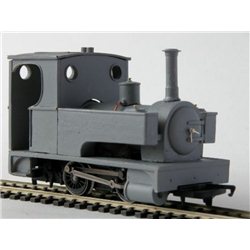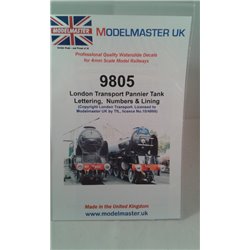Static grass puffer bottles work by manually charging model grass fibres with static electricity. When the charged...
No products
Product successfully added to your shopping cart
There are 0 items in your cart. There is 1 item in your cart.
Search Tips
What were Pannier Tank Locomotives used for?
Pannier tank engines were small steam locomotives characterized by a water tank mounted on either side of the boiler, resembling a pannier or saddlebag. These locomotives were primarily used for shunting and local freight operations and were commonly employed on railways with limited clearance, such as industrial lines, branch lines and dockyards.
- Shunting: pannier tank engines excelled at shunting tasks, which involved the movement and rearrangement of wagons or coaches in yards, sidings, and industrial areas. Their compact size and good manoeuvrability allowed them to navigate tight curves and limited spaces, making them ideal for shunting operations.
- Local freight: pannier tank engines were frequently used to haul local freight trains. These trains consisted of goods wagons carrying various types of cargo, such as coal, timber or general merchandise, between nearby towns, factories or industrial areas. The pannier tanks' sufficient tractive effort enabled them to handle the relatively lighter loads typically associated with local freight operations.
- Passenger service: while pannier tank engines were primarily utilized for freight duties, they were also occasionally employed in passenger service. They would haul short-distance trains, typically on branch lines or suburban routes, carrying commuters or transporting passengers between smaller towns and mainline connections.
The versatility of pannier tank engines made them a popular choice for many railway companies, especially in the first half of the 20th century. They were known for their reliability, ease of maintenance and suitability for the specific operational requirements of smaller-scale railway operations.
By incorporating pannier tank engines into a layout, a modeller can capture the charm and atmosphere of smaller, more localized railway operations. They can be utilised for the hauling of a mix of goods wagons or short passenger trains, reflecting their typical roles in shunting, local freight, and occasional passenger service.
Click here to receive the tips weekly in your mailbox. You can unsubscribe at any time.









